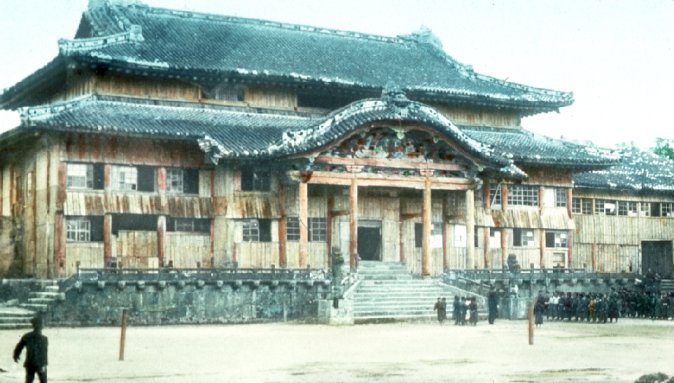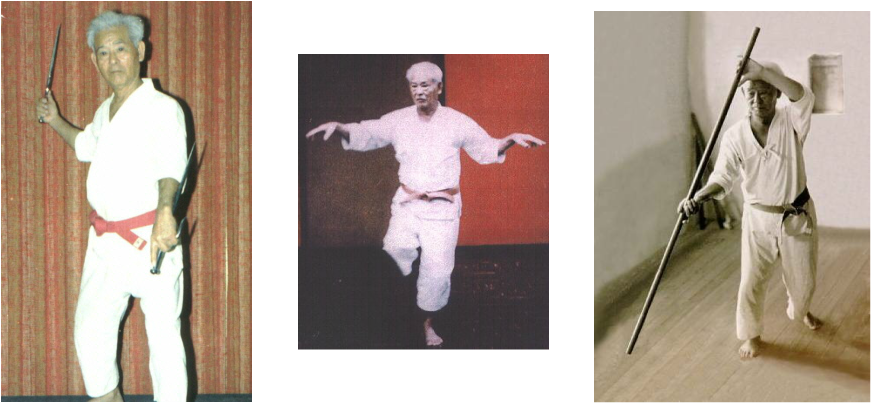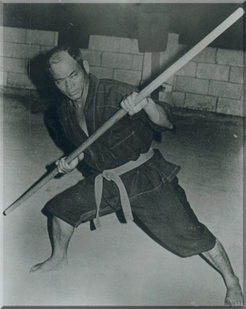Shorin-ryu karate is one of the major branches of karate. It was born out of the fighting forms, techniques, and traditions practiced in the Shuri and Tomari villages of Okinawa. It is a blending of both Chinese and native fighting methods that includes simple strikes, vital target/pressure point attacks, and stand-up grappling. Legend traces the history of Shorin-ryu to two ancient Chinese masters, Iwah and Waishinzan. Iwah's students were mainly citizens of Kume (e.g., Maesato and Kogusuku), although the great Matsumura of Shuri was also his student. Master Waishinzan's students were from Kunenboya (e.g., Senaha, Gushi, Nagahama, Aragaki, Hijaunna, and Kuwae). A man named Higa Matyu was also Waishinzan's student and it is from Matyu that famed Sakugawa Tode traced his fighting system.
Traditionally, the sons of the Okinawan aristocracy were given the privilege of studying in China. Some of their training included exposure to traditional Chinese martial arts. The main Chinese styles taught were Tai Chi, Chuan-fa, Pa Kua and Hsing Yi. It is believed that King Sho Tai of Okinawa sent Hohan (Sokon) Matsumura (1806-1895) to China for precisely this purpose. Matsumura was already considered an expert in Shuri-Te, the empty hand system taught in and around the main city of Shuri, and he was sent to increase his knowledge of Chuan-fa and Hsing-Yi.
Although it can not be known with certainty, it is likely that Hsing Yi influenced the development of Shuri-Te. It is reasonable to surmise that Okinawans visiting China would have incorporated elements of both indigenous Te and Chinese fighting systems. The result was a style that combined linear and circular movements, hard and soft techniques and internal and external training methods. The word Shorin means "Pine Forest" and refers to the Shaolin temple of China and is a reminder of the chief influence of Okinawan karate. Many of the advanced kata, are based on the techniques of Chinese figures, most notable among these being Kusanku and Chinto.
There are four main branches of Shorin-ryu: Matsubayashi, Shobayashi, Kobayashi, and Matsumura Orthodox or Saito.
Traditionally, the sons of the Okinawan aristocracy were given the privilege of studying in China. Some of their training included exposure to traditional Chinese martial arts. The main Chinese styles taught were Tai Chi, Chuan-fa, Pa Kua and Hsing Yi. It is believed that King Sho Tai of Okinawa sent Hohan (Sokon) Matsumura (1806-1895) to China for precisely this purpose. Matsumura was already considered an expert in Shuri-Te, the empty hand system taught in and around the main city of Shuri, and he was sent to increase his knowledge of Chuan-fa and Hsing-Yi.
Although it can not be known with certainty, it is likely that Hsing Yi influenced the development of Shuri-Te. It is reasonable to surmise that Okinawans visiting China would have incorporated elements of both indigenous Te and Chinese fighting systems. The result was a style that combined linear and circular movements, hard and soft techniques and internal and external training methods. The word Shorin means "Pine Forest" and refers to the Shaolin temple of China and is a reminder of the chief influence of Okinawan karate. Many of the advanced kata, are based on the techniques of Chinese figures, most notable among these being Kusanku and Chinto.
There are four main branches of Shorin-ryu: Matsubayashi, Shobayashi, Kobayashi, and Matsumura Orthodox or Saito.
Early Development of Shuri-Te (Shorin-ryu)
Okinawa has produced many ryuha (styles or systems) of its bare-handed fighting art. Some evolved from the teachings of different masters, others are indicative of a particular town, or family tradition handed down from one generation to another. In terms of the main stream of historical development of karate, there are really two central traditions or systems (Naha-Te and Shuri-Te).
Naha-Te was developed around the principal port city of Naha, a large trade center. This method of Te was perpetuated by Bushi Sakiyama (b.1819), Arakaki Kamadeunchu (1840-1920) and Kanryo Higashionna (1851-1915). Naha-Te ultimately became known as Shorei-Ryu (inspirational style) and further found its modern expression in the Goju-Ryu and Uechi-Ryu styles of karate. Shuri-Te, on the other hand, was a style that developed mainly in the city of Shuri, the ancient capital of Okinawa. This is where the king and members of the nobility lived. Shuri-Te (and a smaller system practiced in the nearby town of Tomari, known as Tomari-Te) developed into Shorin-Ryu.
Of the two styles of Okinawan Karate, it should be noted that the Shuri-Te system is characterized by speed and agility over the more rooted forceful movements of the Naha-Te system. Shuri-Te has also been characterized as a more offensive style while Naha-Te has been considered more defensive in nature. Both styles are derived from similar Chinese martial traditions. Naha-Te seems to have more of the soft-techniques and emphasis on breathing and control of Chi or Ki (intrinsic energy).
An Okinawan by the name of Tode Sakugawa (1733-1815) has often been identified as the father of Okinawan karate. Sakugawa's martial art was a mixture of Shuri-Te and Chinese Kenpo. As tradition has it, in 1756, Sakugawa became a student of the Chinese military envoy Kusanku (also Kushanku). Kusanku was a highly skilled Kenpo master and famous for his fighting ability. Kusanku did many things that influenced Shuri-Te’s development. He taught many native Okinawans including Chatan Yara and Shionja of Shuri. He brought some of his students from China to Okinawa. In addition, it is reported that Kusanku introduced a maneuver whereby the closed fist was held in a chambered or ready position along the side of the torso and then from this position a punch was thrown, corkscrewing it in karate fashion, toward the intended target. This position was likely a form of hiki te or withdrawing hand, used in coordination with a strike or attack strategy. Kusanku is also credited with the introduction of a type of kumite or sparring to Okinawan karate. This kumite was referred to as Kumiai Jutsu or fighting technique.
After his training with Kusanku, Sakugawa became well-known as an expert in Tode which is no doubt the reason for his nickname, Tode (Chinese hand) Sakugawa. As was mentioned previously, he is credited with being the first Okinawan Karate master. The reasoning behind this is moniker is that Sakugawa is said to have combined the techniques of Chinese Kenpo (Tode) with the native Shuri-Te - thereby forming the basis of a truly Okinawan Karate style. Sakugawa had several students of note including, Bushi Ukuda, Macabe Chokun and Bushi Matsumoto of Urazoe. However, his last and most famous student was Bushi Matsumura (1797-1889).
Naha-Te was developed around the principal port city of Naha, a large trade center. This method of Te was perpetuated by Bushi Sakiyama (b.1819), Arakaki Kamadeunchu (1840-1920) and Kanryo Higashionna (1851-1915). Naha-Te ultimately became known as Shorei-Ryu (inspirational style) and further found its modern expression in the Goju-Ryu and Uechi-Ryu styles of karate. Shuri-Te, on the other hand, was a style that developed mainly in the city of Shuri, the ancient capital of Okinawa. This is where the king and members of the nobility lived. Shuri-Te (and a smaller system practiced in the nearby town of Tomari, known as Tomari-Te) developed into Shorin-Ryu.
Of the two styles of Okinawan Karate, it should be noted that the Shuri-Te system is characterized by speed and agility over the more rooted forceful movements of the Naha-Te system. Shuri-Te has also been characterized as a more offensive style while Naha-Te has been considered more defensive in nature. Both styles are derived from similar Chinese martial traditions. Naha-Te seems to have more of the soft-techniques and emphasis on breathing and control of Chi or Ki (intrinsic energy).
An Okinawan by the name of Tode Sakugawa (1733-1815) has often been identified as the father of Okinawan karate. Sakugawa's martial art was a mixture of Shuri-Te and Chinese Kenpo. As tradition has it, in 1756, Sakugawa became a student of the Chinese military envoy Kusanku (also Kushanku). Kusanku was a highly skilled Kenpo master and famous for his fighting ability. Kusanku did many things that influenced Shuri-Te’s development. He taught many native Okinawans including Chatan Yara and Shionja of Shuri. He brought some of his students from China to Okinawa. In addition, it is reported that Kusanku introduced a maneuver whereby the closed fist was held in a chambered or ready position along the side of the torso and then from this position a punch was thrown, corkscrewing it in karate fashion, toward the intended target. This position was likely a form of hiki te or withdrawing hand, used in coordination with a strike or attack strategy. Kusanku is also credited with the introduction of a type of kumite or sparring to Okinawan karate. This kumite was referred to as Kumiai Jutsu or fighting technique.
After his training with Kusanku, Sakugawa became well-known as an expert in Tode which is no doubt the reason for his nickname, Tode (Chinese hand) Sakugawa. As was mentioned previously, he is credited with being the first Okinawan Karate master. The reasoning behind this is moniker is that Sakugawa is said to have combined the techniques of Chinese Kenpo (Tode) with the native Shuri-Te - thereby forming the basis of a truly Okinawan Karate style. Sakugawa had several students of note including, Bushi Ukuda, Macabe Chokun and Bushi Matsumoto of Urazoe. However, his last and most famous student was Bushi Matsumura (1797-1889).
Matsumura Orthodox (Saito)
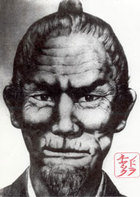
Bushi Matsumura
Sokon Matsumura, also known as Bushi (Warrior) Matsumura and Shuri Matsumura (1797-1889), was one of the most renowned martial artists of his time. He is known as the founder of Shorin Ryu Karate. Matsumura is responsible for carrying on the teachings of the original Shuri-Te. Matsumura chose the name Shorin-Ryu (Shaolin in Chinese) as the name of his Ryu due to its connection with the Shaolin Temple in China. Although some authorities believe that Anko Itosu (1830-1915), Matsumura's student, is actually responsible for adopting the name Shorin-Ryu.
Matsumura was recruited into the service of the Sho family (Royal family of Okinawa) and eventually became the chief martial arts instructor and bodyguard for the Okinawan King. At some point in his career (ca. 1830), he went to China and studied the Shaolin style of Chinese Kenpo (fist method) and Chinese weaponry. It is also known that he traveled to Foochow in Fukien province on numerous occasions as an envoy for the Okinawan King. After his return from China he organized and refined the Shorin-Ryu system of Okinawan Karate.
Matsumura is credited with passing on the following kata: Naihanchi I & II, Passai Dai (Matsumura no Passai), Seisan, Chinto, Gojushiho (fifty-four steps of the Black Tiger), Kusanku (the embodiment of Kusanku's teaching as passed on to Tode Sakugawa) and Hakutsuru (white crane). The Hakutsuru kata contains the elements of the white crane system taught within the Shaolin system of Chinese Kenpo. Another set of kata, known as Chanan in Matsumura's time, is said to have been devised by Matsumura himself and was the basis for Pinan I and II.
Matsumura was given the title "Bushi" meaning warrior by the Okinawan King in recognition of his abilities and accomplishments in the martial arts. In fact, Matsumura fought many times but was never defeated. His martial arts endeavors, specifically the organization of Okinawan Shorin Ryu system has been the progenitor of many contemporary karate styles to include Shotokan Ryu and Shito-Ryu. Ultimately, all modern styles of karate that evolved from the Shuri-Te lineage can be traced back to the teachings of Bushi Matsumura.
Sokon Matsumura, also known as Bushi (Warrior) Matsumura and Shuri Matsumura (1797-1889), was one of the most renowned martial artists of his time. He is known as the founder of Shorin Ryu Karate. Matsumura is responsible for carrying on the teachings of the original Shuri-Te. Matsumura chose the name Shorin-Ryu (Shaolin in Chinese) as the name of his Ryu due to its connection with the Shaolin Temple in China. Although some authorities believe that Anko Itosu (1830-1915), Matsumura's student, is actually responsible for adopting the name Shorin-Ryu.
Matsumura was recruited into the service of the Sho family (Royal family of Okinawa) and eventually became the chief martial arts instructor and bodyguard for the Okinawan King. At some point in his career (ca. 1830), he went to China and studied the Shaolin style of Chinese Kenpo (fist method) and Chinese weaponry. It is also known that he traveled to Foochow in Fukien province on numerous occasions as an envoy for the Okinawan King. After his return from China he organized and refined the Shorin-Ryu system of Okinawan Karate.
Matsumura is credited with passing on the following kata: Naihanchi I & II, Passai Dai (Matsumura no Passai), Seisan, Chinto, Gojushiho (fifty-four steps of the Black Tiger), Kusanku (the embodiment of Kusanku's teaching as passed on to Tode Sakugawa) and Hakutsuru (white crane). The Hakutsuru kata contains the elements of the white crane system taught within the Shaolin system of Chinese Kenpo. Another set of kata, known as Chanan in Matsumura's time, is said to have been devised by Matsumura himself and was the basis for Pinan I and II.
Matsumura was given the title "Bushi" meaning warrior by the Okinawan King in recognition of his abilities and accomplishments in the martial arts. In fact, Matsumura fought many times but was never defeated. His martial arts endeavors, specifically the organization of Okinawan Shorin Ryu system has been the progenitor of many contemporary karate styles to include Shotokan Ryu and Shito-Ryu. Ultimately, all modern styles of karate that evolved from the Shuri-Te lineage can be traced back to the teachings of Bushi Matsumura.

According to Hohan Soken (1889-1982), the purest teaching of Matsumura's Shorin Ryu was carried on by Matsumura Nabi (c.1860-1930). He received training in the family style of Matsumura Shorin-Ryu that also included the secret techniques of the white crane. In his later years, Nabe Matsumura was referred to as Nabe Tanme or "oldman" Nabe. In keeping with Okinawan tradition at that time, he had only one student, his nephew, Hohan Soken.
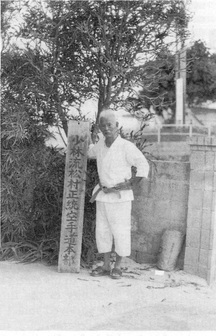
The next successor in the lineage of Matsumura Shorin Ryu was Hohan Soken (1889-1982). He began training at age thirteen under his uncle, Nabe Matsumura. Soken had to work in the fields as a youth in spite of his Samurai heritage. This was due to a political reorganization in the Ryukyu Islands and all of Japan as a result of the Meiji restoration. After ten years of basic training under Nabe Matsumura, Soken began learning the techniques of the white crane or Hakutsuru. This was in 1912 when he was twenty-three years old. According to Soken, this was a secret technique or training methodology that was confined to the Matsumura family. Soken's instruction in the white crane technique emphasized balance training. One training method that he practiced was to perform the Hakutsuru kata on a board floating in a pond. The board was just large enough to support his weight. The Hakutsuru technique manifests the Chinese concept of the soft (defensive) fist and balance training while imitating the delicate movements of the white crane. In fact, this concept is found throughout all the kata of Matsumura Shorin-Ryu. For example, Chinto uses the one legged stance of the crane extensively, Gojushiho uses the movements of the neck and beak of the crane in its technique, and Hakutsuru uses the wing of the crane.
Master Soken also trained with Kenwa Mabuni (1889-1953) and Gokenki, a Chinese tea merchant living in Okinawa. Gokenki, Soken, Mabuni and several other Okinawans trained together as a group. Gokenki's style was Hakutsuru Kenpo (white crane fist style) and he was from the Fukien coast of China.
Up until the 1950's Master Soken referred to his martial art as Matsumura Shuri-Te, then he began calling his style Matsumura Seito (orthodox) Shorin Ryu in order to differentiate it from the other emerging Shorin ryu styles. In addition to the kata handed down by Matsumura, Hohan Soken later added to his system's repertoire Rohai 1, 2 & 3. Rohai means vision of a crane and was originally a Tomari-Te kata.
Hohan Soken was a highly respected master in Okinawa. He helped pass on the legacy of Matsumura Shorin Ryu. Perhaps his life is reflected best in his own words - his death poem: "I have taught you all I know. There is no more I can teach you. I am a candle whose light has traveled far. You are my candles to whom I have passed on my light. It is you who will light the path for others. Today I see around me the lights of Shaolin. The flame of tomorrow. My task is done, soon my flame will end. Teach the true spirit of karate-do and one day you may enter the Temple of Shaolin."
Hohan Soken gave his Menkyo Kaiden to Fusei Kise prior to his death. The legacy of Matsumura Shorin Ryu continues with Fusei Kise.
Master Soken also trained with Kenwa Mabuni (1889-1953) and Gokenki, a Chinese tea merchant living in Okinawa. Gokenki, Soken, Mabuni and several other Okinawans trained together as a group. Gokenki's style was Hakutsuru Kenpo (white crane fist style) and he was from the Fukien coast of China.
Up until the 1950's Master Soken referred to his martial art as Matsumura Shuri-Te, then he began calling his style Matsumura Seito (orthodox) Shorin Ryu in order to differentiate it from the other emerging Shorin ryu styles. In addition to the kata handed down by Matsumura, Hohan Soken later added to his system's repertoire Rohai 1, 2 & 3. Rohai means vision of a crane and was originally a Tomari-Te kata.
Hohan Soken was a highly respected master in Okinawa. He helped pass on the legacy of Matsumura Shorin Ryu. Perhaps his life is reflected best in his own words - his death poem: "I have taught you all I know. There is no more I can teach you. I am a candle whose light has traveled far. You are my candles to whom I have passed on my light. It is you who will light the path for others. Today I see around me the lights of Shaolin. The flame of tomorrow. My task is done, soon my flame will end. Teach the true spirit of karate-do and one day you may enter the Temple of Shaolin."
Hohan Soken gave his Menkyo Kaiden to Fusei Kise prior to his death. The legacy of Matsumura Shorin Ryu continues with Fusei Kise.

Fusei Kise was born on May 4, 1935. He began his study of karate in 1947 under his uncle, Makabe Cho and later with Nobutake Shingake. In 1958, Kise began studying under Soken Hohan. In 1960, he became a student of Nakamura Shigeru, founder of the Okinawan Kenpo Karate-Do Federation, and after five years of training with Nakamura, Kise was promoted to shihan (7th Dan). Kise continued to train in both Shorinji-ryu karate-do as well as Shorin-ryu under Soken. In 1972, Master Kise qualified for the hanshi title by passing the 8th dan examination held by Hohan Soken and Makabe. He was awarded his 9th Dan by Master Soken on September 1, 1976 and in 1977, Master Kise founded the Shorin-Ryu Kenshin Kan Karate and Kobudo Federation. Fusei Kise was promoted to 10th Dan in Shorin Ryu by Master Shigeru Tamaiya in 1987.
Matsubayashi Style
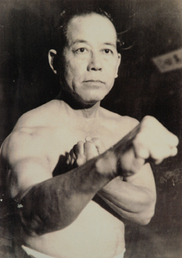
Chotoku Kiyan, Choki Motobu and Ankichi Arakaki were the teachers of Master Nagamine Shoshin who was the head of Matsubayashi Shorin-ryu. Nagamine Shoshin was head of Matsubayashi Shorin ryu (Pine Forest Shorin ryu) until his death in 1997. Nagamine was born in Naha in 1907. He began karate under the guidance of Chojin Kuba at the age of 17. He then moved to Shuri to begin training under Taro Shimabuku (Chubu-Ryu). Later he trained with Ankichi Arakaki and Kodatsu Iha (a student of Matsumura). After serving in the Okinawan military he returned as a police officer and began training with Kiyan Chotoku, Choki Motobu and later Chosin Chibana. In 1953 he opened his own school in Naha and named his style of Shuri-Te, Matsubayashi-Ryu, after his teacher. Nagamine's style is chiefly distinguished from the others by a typically faster, lighter movement (as compared to the Kobayashi style). His system was left to his son, Nagamine Matayoshi until his death in 2012.
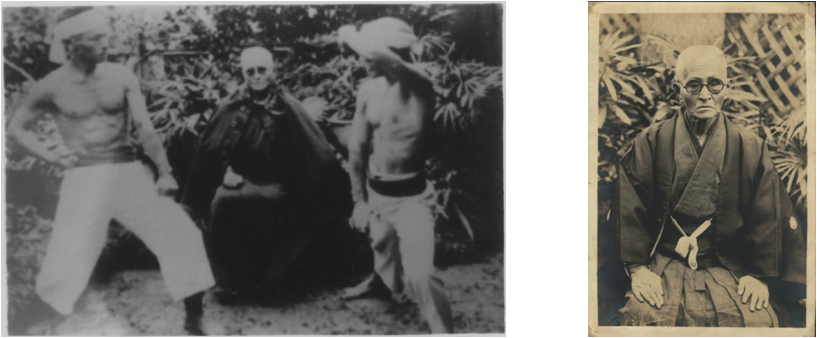
KIYAN, Chotoku (1870 – 1945), born in Shuri to descendants of Okinawan nobility in December 1870. Kiyan's whole life was a struggle against misfortune. But Kiyan Chotoku embodied the true spirit of karate by always fighting to overcome adversity, never complaining about hardship, and exerting all his strength to further the art of karate. Kiyan started his training at an early age (8) with Bushi Matsumura. He was later instructed by Itotsu and Oyadomari. Kiyan's students included Shimabuku (Isshin-ryu), Chibana (Shorin-Ryu), Funakoshi (Shotokan), Nagamine (Matsubayashi Shorin-Ryu), Eizo Shimabuku (Shorinji-Ryu), and Tsuyoshi Chitose (Chito-Ryu)
Shobayashi Style

Chotoku Kiyan is generally attributed as the founder of Shobayashi Shorin-Ryu. His disciples, of which there are many, included Ankichi Arakaki and Shoshine Nagamine (associated with Matsubayashi Shorin-Ryu), Joen Nakazato (Shorinji-Ryu), Zenryo Shimabukuro (Chubu Shorin-Ryu), Tatsuo Shimabuku (Isshin-Ryu), Taro Shimabuku, and Eizo Shimabuku.
Eizo Shimabuku, born in 1925 in Gushikawa village, is reportedly the youngest 10th dan Hanshi ever promoted on Okinawa. During his training he studied under Miyagi Chojun, Choki Motobu, and finally, Chotoku Kyan. He received kobudo training under Shinken Taira. He is considered to be the current head of Shobayashi Shorin-Ryu passed on by Kiyan.
Because Shimabukoro maintained the traditions and excellence of Shorin-ryu after Master Kyan's death, in 1959 Kangen Toyama, President of the All Japan Karatedo League and founder of Shudokan Karate, promoted him to tenth degree black belt. Kangen Toyama also appointed Shimabuku the chairman, Okinawan Headquarters, of the All Japan Karatedo League. Two years later, in 1961, at the age of 36, he was awarded the tenth degree red belt, the youngest man ever to attain this status.
Eizo Shimabuku, born in 1925 in Gushikawa village, is reportedly the youngest 10th dan Hanshi ever promoted on Okinawa. During his training he studied under Miyagi Chojun, Choki Motobu, and finally, Chotoku Kyan. He received kobudo training under Shinken Taira. He is considered to be the current head of Shobayashi Shorin-Ryu passed on by Kiyan.
Because Shimabukoro maintained the traditions and excellence of Shorin-ryu after Master Kyan's death, in 1959 Kangen Toyama, President of the All Japan Karatedo League and founder of Shudokan Karate, promoted him to tenth degree black belt. Kangen Toyama also appointed Shimabuku the chairman, Okinawan Headquarters, of the All Japan Karatedo League. Two years later, in 1961, at the age of 36, he was awarded the tenth degree red belt, the youngest man ever to attain this status.
Kobayashi Style (Chibana-ha)
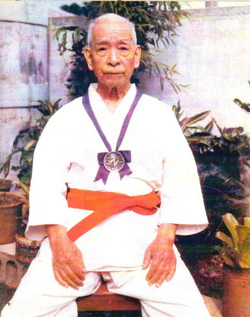
Chosin Chibana was born in Shuri on June 5, 1886, into a modest family in Tottori-cho (Shuri City, Okinawa). As a boy, he worked in the fields to help with his family’s livelihood. He attended Okinawa Prefectual Grammer School. In 1898, Chibana successfully met the requirements necessary to enter Okinawa Prefectural Daiich Middle School, but left school in mid-course in 1900 to become a student of the widely known authority of Karate, Ankoh Itotsu. He began training with Yasutsune "Ankoh" Itosu after dropping out of the Okinawa Kenritsu Dai-Ichi Chu-gakko (high school). He was then 15 years old.
He studied with Itosu until his teacher's death on January 26, 1915, at the age of 85. Five years after Itosu passed, Chibana began teaching on his own. His first training hall was located at Tottori-bori and as his reputation spread, he was able to open up a second training hall in Kumo-cho, Naha.
During this time, Chibana had a number of notable classmates. Students studying under Itotsu Sensei with Chibana were Kenwa Mabuni, Choki Oshiro, and Masashige Shiromo, to just name a few. In 1920, Chibana Sensei opened two dojos, one in Shuri and one in Naha. Shortly before this time, Karate had been introduced to mainland Japan by two of Chibana's classmates, Kenwa Mabuni and Gichin Funakoshi. During this surge of interest in Karate, many Karateka sought ways of making what they knew more appealing, but Chibana Sensei maintained that it would take him a lifetime to understand thoroughly what he had been taught by Itotsu Sensei. He could often be heard saying, "Karate is teaching Kata (form) we have taken from forefathers without changing it at all." During this time, changes were taking place in Karate and various teachers began to name their respective systems and Ryuha. Chibana Sensei named his system Shorin-Ryu.
Many of Chibana's top students served and died for the Japanese Imperial Army during WWII. Once over, Chibana returned to teaching in Giho-cho (a section of Shuri City). From February, 1954, until December, 1958, he was also the Chief Karate-do Instructor for the Shuri City Police Department. On May 5, 1956, the Okinawa Karate-do Association was formed and he was appointed its first president. Having devoted his total life to teaching Karate, at the age of 71, he organized the Okinawa Karate Federation and took office as its first president. The Okinawa Karate Federation was made up of main Ryus that had developed in Okinawa and incorporating them under a single federation helped to reduce the quarreling that had developed between schools and systems as to whose system was the best. In 1957, because of his efforts to unite Karate on Okinawa, he was given the degree of "Hanshi no Sogo" (Doctoral Master) by the Dainippon Butokukai. This was the highest rank ever given to any Karate instructor and no one has received this rank since.
In 1961, he seceded from the presidency of the Okinawa Karate Federation and organized the Okinawa Shorin-Ryu Karate Association. In 1964, Chibana was advised that he had terminal cancer of the throat. He was awarded the Fourth Order of Merit (Sacred Treasure, Kunyonto) from the Emperor of Japan, in 1969, for his life long contributions to the martial arts. By the end of 1968, Chibana-sensei's condition became worse and he returned to Ohama Hospital. Despite the doctors' efforts to save his life, he died at 6:40 a.m. on the 26th of February, 1969, at the advanced age of 84. He left behind him a life completely devoted to Karate and the almost impossible feat of having trained five of his disciples, Chozo Nakama, Katsuya Miyahira, Kensei Kinjo, Yucho Ku Higa, and Shugoro Nakazato, to the stage of Kyudan (9th Degree) Karate Master.
He studied with Itosu until his teacher's death on January 26, 1915, at the age of 85. Five years after Itosu passed, Chibana began teaching on his own. His first training hall was located at Tottori-bori and as his reputation spread, he was able to open up a second training hall in Kumo-cho, Naha.
During this time, Chibana had a number of notable classmates. Students studying under Itotsu Sensei with Chibana were Kenwa Mabuni, Choki Oshiro, and Masashige Shiromo, to just name a few. In 1920, Chibana Sensei opened two dojos, one in Shuri and one in Naha. Shortly before this time, Karate had been introduced to mainland Japan by two of Chibana's classmates, Kenwa Mabuni and Gichin Funakoshi. During this surge of interest in Karate, many Karateka sought ways of making what they knew more appealing, but Chibana Sensei maintained that it would take him a lifetime to understand thoroughly what he had been taught by Itotsu Sensei. He could often be heard saying, "Karate is teaching Kata (form) we have taken from forefathers without changing it at all." During this time, changes were taking place in Karate and various teachers began to name their respective systems and Ryuha. Chibana Sensei named his system Shorin-Ryu.
Many of Chibana's top students served and died for the Japanese Imperial Army during WWII. Once over, Chibana returned to teaching in Giho-cho (a section of Shuri City). From February, 1954, until December, 1958, he was also the Chief Karate-do Instructor for the Shuri City Police Department. On May 5, 1956, the Okinawa Karate-do Association was formed and he was appointed its first president. Having devoted his total life to teaching Karate, at the age of 71, he organized the Okinawa Karate Federation and took office as its first president. The Okinawa Karate Federation was made up of main Ryus that had developed in Okinawa and incorporating them under a single federation helped to reduce the quarreling that had developed between schools and systems as to whose system was the best. In 1957, because of his efforts to unite Karate on Okinawa, he was given the degree of "Hanshi no Sogo" (Doctoral Master) by the Dainippon Butokukai. This was the highest rank ever given to any Karate instructor and no one has received this rank since.
In 1961, he seceded from the presidency of the Okinawa Karate Federation and organized the Okinawa Shorin-Ryu Karate Association. In 1964, Chibana was advised that he had terminal cancer of the throat. He was awarded the Fourth Order of Merit (Sacred Treasure, Kunyonto) from the Emperor of Japan, in 1969, for his life long contributions to the martial arts. By the end of 1968, Chibana-sensei's condition became worse and he returned to Ohama Hospital. Despite the doctors' efforts to save his life, he died at 6:40 a.m. on the 26th of February, 1969, at the advanced age of 84. He left behind him a life completely devoted to Karate and the almost impossible feat of having trained five of his disciples, Chozo Nakama, Katsuya Miyahira, Kensei Kinjo, Yucho Ku Higa, and Shugoro Nakazato, to the stage of Kyudan (9th Degree) Karate Master.
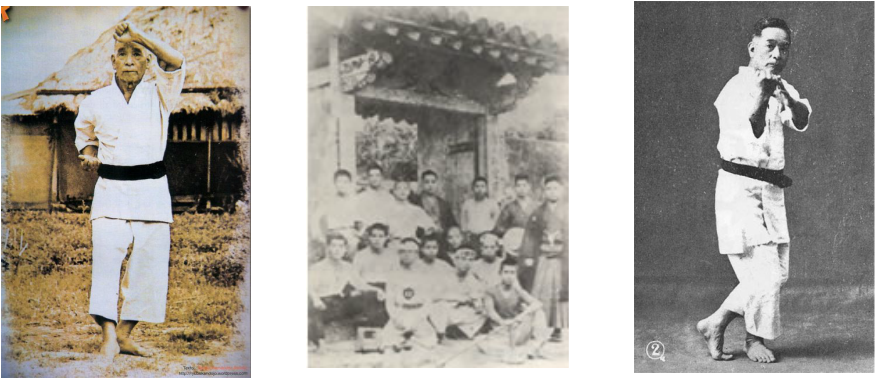
"In the old days we trained at karate as a martial art, but now they train at karate as a gymnastic sport. I think we must avoid treating karate as a sport - it must be a martial art at all times! Your fingers and the tips of your toes must be like arrows, your arms must be like iron.
You have to think that if you kick, you try to kick the enemy dead. If you punch, you must thrust to kill. If you strike, then you strike to kill the enemy. This is the spirit you need in order to progress in your training".
- Chibana Chosin -
Chibana Chosin left behind five senior students - all promoted to the rank of 9th Dan at the time of his death in 1969
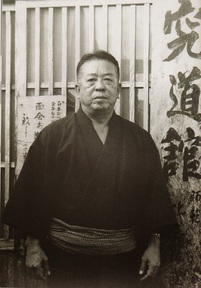
Yuchoku Higa (1910-1993) - Shorin-Ryu Kyudokan Shinko Kai
Higa was born in Naha, Okinawa, February 4, 1910. His first master was the sensei Jiro Shiroma, who was a specialist in Shuri-te, and who trained him for 6 years utilizing intense practice of Kihon and Kata as his basis. Only in the final phase of the relationship with J.Shiroma, did Higa carry out the Kumite exercises. On the death of the master Shiroma in 1933, and after training alone for 1 year, he became a pupil of the masters Jinnan Shinzato and Seiei Miyahira. With the former, who was in his turn a disciple of master Chojun Miyagi and belonged to the Naha-te school, Higa learnt the characteristics of the style which is nowadays known as Goju ryu, eventually incorporating the kata Seisan into the school he was later to set up. Apart from broadening his knowledge of Shuri-te, Higa learnt from Master Miyahira the punching techniques, in which S.Miyahira had become an expert.
In 1943 he met Master Choshin Chibana, a direct disciple of Master Anko Itosu, and in a short time became his main pupil. In 1945, with his police-officer qualification, Master Higa worked at Yonabaru police headquarters, being transferred 2 years later to the Naha police headquarters.
In 1961 when the first Shorinryu Karate-do Association of Okinawa was formed, presided over by Master Chibana, Higa was assigned the role of vice-president. As well as having a role in the Okinawa House of Representatives, as either president or member, on eight successive occasions, he was also president of the Okinawa Federation of Karate and Kobudo, chief adviser for the Okinawa Association of Masters of Karate-do etc. Higa also received countless awards, among which there was one for illustrious individuals who were invited to the Royal Palace in Tokyo, by the Emperor Hirohito. In 1976 he received his Hanshi 10th Dan. In 1992, along with other great masters, he took part in one of his last and most memorable exhibitions at the Shuri Castle. The following year, in February, he received the karate-do Merit Prize awarded by the Ryu Kyu press. Master Yuchoku died on November 6, 1994, in Naha, at the age of 84.
Higa was born in Naha, Okinawa, February 4, 1910. His first master was the sensei Jiro Shiroma, who was a specialist in Shuri-te, and who trained him for 6 years utilizing intense practice of Kihon and Kata as his basis. Only in the final phase of the relationship with J.Shiroma, did Higa carry out the Kumite exercises. On the death of the master Shiroma in 1933, and after training alone for 1 year, he became a pupil of the masters Jinnan Shinzato and Seiei Miyahira. With the former, who was in his turn a disciple of master Chojun Miyagi and belonged to the Naha-te school, Higa learnt the characteristics of the style which is nowadays known as Goju ryu, eventually incorporating the kata Seisan into the school he was later to set up. Apart from broadening his knowledge of Shuri-te, Higa learnt from Master Miyahira the punching techniques, in which S.Miyahira had become an expert.
In 1943 he met Master Choshin Chibana, a direct disciple of Master Anko Itosu, and in a short time became his main pupil. In 1945, with his police-officer qualification, Master Higa worked at Yonabaru police headquarters, being transferred 2 years later to the Naha police headquarters.
In 1961 when the first Shorinryu Karate-do Association of Okinawa was formed, presided over by Master Chibana, Higa was assigned the role of vice-president. As well as having a role in the Okinawa House of Representatives, as either president or member, on eight successive occasions, he was also president of the Okinawa Federation of Karate and Kobudo, chief adviser for the Okinawa Association of Masters of Karate-do etc. Higa also received countless awards, among which there was one for illustrious individuals who were invited to the Royal Palace in Tokyo, by the Emperor Hirohito. In 1976 he received his Hanshi 10th Dan. In 1992, along with other great masters, he took part in one of his last and most memorable exhibitions at the Shuri Castle. The following year, in February, he received the karate-do Merit Prize awarded by the Ryu Kyu press. Master Yuchoku died on November 6, 1994, in Naha, at the age of 84.
Katsuya Miyahira was one of Chibana Chosin's top students. Miyahira was born on August 16, 1918. He was accepted as a student by Chibana sensei in 1933. He received a shihan certificate from Chibana and opened a training hall in Aza Kaneyuki Nishihara-gun in 1948 - later moving his school to Aza Korai located in Okinawa City in 1953. He opened a dojo in Azato in 1956 and he was p 8th Dan fromoted to 8th Dan by Chibana Choshin in 1962 and 9th Dan in 1967. In 1969 he became president of the Okinawa Shorin-ryu Karate-do Association. In 1978 he was awarded the rank of JuDan, Hanshi.

Shuguro Nakazato was born in Naha-city Okinawa on August 14, 1919. While attending normal school in Osaka Japan in 1935, he began his study of Karate at the age of 16 under the instruction of Ishu Selichl. Nakazato studied under Sensei Ishu for 6 years. During the war, he was in the Japanese calvary. After the war was over, Nakazato returned to his home in Okinawa to find his family a casualty of war. In June of 1946, he began his study of Karate under Choshin Chibana, who was the Menkyo inheritor of Anko Itotsu. In 1948 Chibana's Shuri dojo closed but Nakazato continued his study with Master Chibana. For one year Chibana gave Nakazato personal tutoring at Chibana's home.
In 1951 Nakazato was instrumental in helping Chibana open his new DAI ICHI DOJO in Naha City at Matsuo. Chibana continued his personal tutoring of Nakazato at the Dai Ichi Dojo until January 10, 1954 when Nakazato received his Shihan Menkyojo at which ti me he became Master Chibana's Shihan Dai (assistant). After work as the Shihan Dai in the Dai Ichi Dojo under Chibana for one and half years, Nakazato was commissioned by Chibana to find the Shorin-Ryu. ShorinKan Nakazato dojo in Naha City at Aza.
Nakazato was appointed as one of the directors of the Okinawan Karate Federation when it was formed in 1956 with the four major (shiryuha) systems of Karate in Okinawa Goju-Ryu; Uechi-Ryu, Shorin-Ryu, Matsubayshi-Ryu. All during this time Nakazato devoted all of his time and energy to teaching and perfecting Shorin-Ryu Karate-do. In 1960 the Okinawan Karate Federation promoted him to Eight Degree Black Belt and Kyoshi. Seven years later Nakazato continued his climb to the top of the Shorin-Ryu hierarchy when Master Chibana and the Okinawa Shorin-Ryu Karate-do Kyokai promoted him to Hanshi and 9th Degree Black Belt (1967).
Upon Chibana Sensei’s death in 1969, Nakazato Sensei became the president of the Okinawan Shorin-Ryu ShorinKan Karate-do Kyokai and was promoted to 10th Dan in 1980. Nakazato Sensei is one of the most influential living karate Grand Masters in Okinawa and travels many times a year to promote the traditional Okinawan Shorin-Ryu ShorinKan Karate (Kobayashi-ryu) system. Hanshi Ju Dan headed the Okinawan karate delegation and was asked to give a special performance at the 1996 Olympic Games held in Atlanta, Georgia. Nakazato began his study of weapons almost from the beginning of his training in 1935. He was trained in the sai, bo, nunchaku, tonfa, and kama, but he specialized in Bojutsu for 4 years. He promotes various forms from within the Yamani Ryu and Nakaima Ryu Kobudo systems. Nakazato sensei passed recently at the age of 97 (2016), passing the leadership of Shorinkan to his son, Minoru.
In 1951 Nakazato was instrumental in helping Chibana open his new DAI ICHI DOJO in Naha City at Matsuo. Chibana continued his personal tutoring of Nakazato at the Dai Ichi Dojo until January 10, 1954 when Nakazato received his Shihan Menkyojo at which ti me he became Master Chibana's Shihan Dai (assistant). After work as the Shihan Dai in the Dai Ichi Dojo under Chibana for one and half years, Nakazato was commissioned by Chibana to find the Shorin-Ryu. ShorinKan Nakazato dojo in Naha City at Aza.
Nakazato was appointed as one of the directors of the Okinawan Karate Federation when it was formed in 1956 with the four major (shiryuha) systems of Karate in Okinawa Goju-Ryu; Uechi-Ryu, Shorin-Ryu, Matsubayshi-Ryu. All during this time Nakazato devoted all of his time and energy to teaching and perfecting Shorin-Ryu Karate-do. In 1960 the Okinawan Karate Federation promoted him to Eight Degree Black Belt and Kyoshi. Seven years later Nakazato continued his climb to the top of the Shorin-Ryu hierarchy when Master Chibana and the Okinawa Shorin-Ryu Karate-do Kyokai promoted him to Hanshi and 9th Degree Black Belt (1967).
Upon Chibana Sensei’s death in 1969, Nakazato Sensei became the president of the Okinawan Shorin-Ryu ShorinKan Karate-do Kyokai and was promoted to 10th Dan in 1980. Nakazato Sensei is one of the most influential living karate Grand Masters in Okinawa and travels many times a year to promote the traditional Okinawan Shorin-Ryu ShorinKan Karate (Kobayashi-ryu) system. Hanshi Ju Dan headed the Okinawan karate delegation and was asked to give a special performance at the 1996 Olympic Games held in Atlanta, Georgia. Nakazato began his study of weapons almost from the beginning of his training in 1935. He was trained in the sai, bo, nunchaku, tonfa, and kama, but he specialized in Bojutsu for 4 years. He promotes various forms from within the Yamani Ryu and Nakaima Ryu Kobudo systems. Nakazato sensei passed recently at the age of 97 (2016), passing the leadership of Shorinkan to his son, Minoru.
